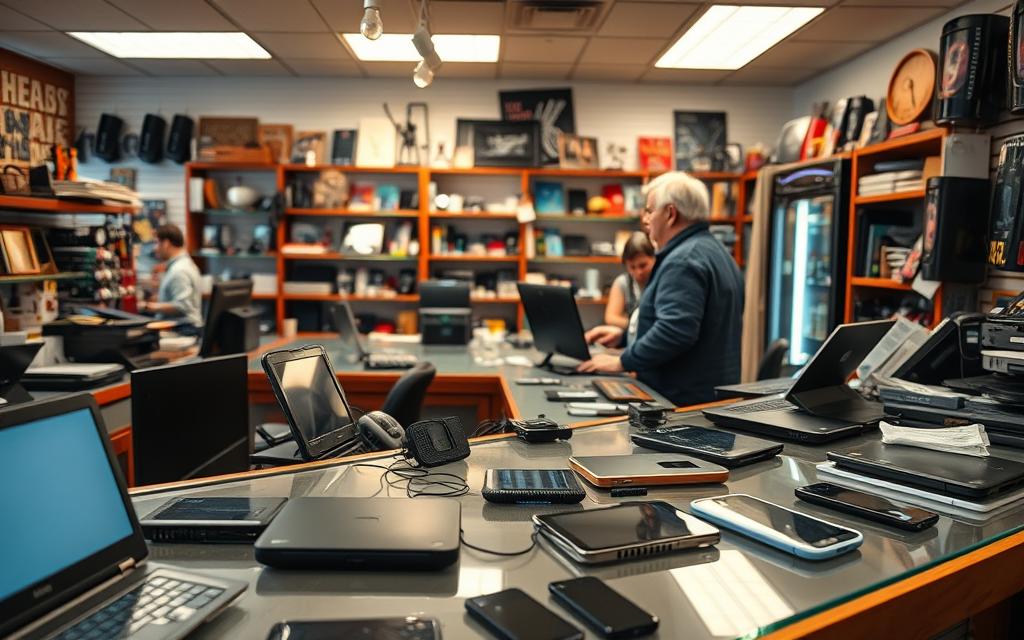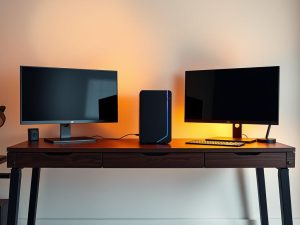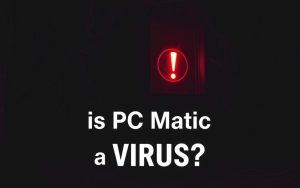Table of Contents
Need quick cash for your laptop or desktop? Many places accept electronics for collateral or purchase. However, understanding the process helps maximize value.
Specialized buyers often pay more than traditional options. For example, a $1,000 device might fetch $200-$300 at certain locations. Meanwhile, dedicated resellers could offer 40%-60% of retail price.
Condition, brand reputation, and market demand impact offers. Newer models from premium brands typically get higher valuations. Always research alternatives before committing.
While immediate funds are appealing, compare long-term trade-offs. Some solutions involve high fees or strict repayment terms. Exploring all avenues ensures the best outcome.
Do Pawn Shops Buy Computers? Understanding the Basics
Many people turn to collateral-based solutions when needing quick cash. Electronics like laptops and desktops often qualify for these transactions. The process differs significantly from traditional selling methods.
How the Transaction Process Works for Electronics
Specialized locations handle electronics differently than other items. Here’s what typically happens:
- Bring your device with all original accessories
- Present valid identification and proof of address
- Allow staff to inspect and test the equipment
- Receive a cash offer based on current market value
Face-to-face negotiations often yield better results than online estimates. The transaction process usually completes within 30 minutes if all requirements are met.
Collateral Loans Versus Outright Sales
Understanding these two options helps make informed decisions:
| Factor | Collateral Loan | Outright Sale |
|---|---|---|
| Ownership | Temporary transfer | Permanent transfer |
| Payment Type | Loan amount | One-time payment |
| Item Recovery | Possible with repayment | Not possible |
| Risk Level | Medium (potential loss) | Low (immediate funds) |
Most locations hold devices for 30-90 days before reselling. This gives owners time to reclaim their property. However, failing to repay means losing the item permanently.
Testing policies vary by location. Some verify functionality on-site, while others may require professional assessment. Always ask about verification methods before proceeding.
What Pawn Shops Look for in a Computer
Electronics valuation depends on specific criteria that buyers prioritize. Professional appraisers examine both technical functionality and physical presentation. Meeting these standards often determines whether your device qualifies for financing or purchase.

Minimum Condition Requirements
Devices must meet baseline operational standards. The working condition checklist includes:
- Successful boot-up with operating system loading
- Functional USB ports and connectivity options
- Intact display without cracks or dead pixels
- Proper keyboard/trackpad response
Cosmetic grading follows this industry-standard scale:
| Grade | Description | Value Impact |
|---|---|---|
| A | Like-new with minimal wear | +25% |
| B | Visible scratches but fully functional | Base value |
| C | Significant wear with minor defects | -15% |
| D | Cosmetic damage affecting use | Rejected |
Must-Have Accessories for Maximum Value
Complete packages typically receive 30-50% higher offers. Essential accessories include:
“Original power adapters alone can increase offers by $20-$100 depending on the device brand.”
Value multipliers beyond basic components:
- Original packaging with matching serial numbers
- Included peripherals (mice, styluses, docks)
- Verifiable purchase receipts
- Unused warranty periods
Common rejection reasons include water damage indicators, BIOS passwords, or swollen batteries. A 2022 market study showed MacBooks with complete charger sets received 43% higher valuations than those without.
Factors That Determine a Computer’s Pawn Value
Several key elements shape how much your device is worth. Appraisers analyze technical specs, physical condition, and current trends to calculate offers. Knowing these factors helps you negotiate better deals.
Brand and Model Influence on Price
Premium brands like Apple or Dell XPS command higher prices. Budget models often receive lower valuations, even with similar specs. For example, a 2022 MacBook Pro may fetch $400–500, while a comparable non-premium model might only net $200–300.
Key brand-tier differences:
- Apple: 30–50% higher value than competitors
- Gaming laptops: $100–400 based on GPU strength
- Business-grade: Steady demand for durable models
How Age and Condition Affect Offers
Devices under 3 years of age typically retain 40–60% of retail value. Beyond this threshold, offers drop sharply. Physical wear also matters:
| Condition Level | Impact on Value |
|---|---|
| Like-new (no scratches) | +25% |
| Minor wear (light scuffs) | Base value |
| Cracked casing or screen | -50% or rejection |
Market Demand for Specific Devices
Local market demand fluctuates seasonally. Gaming PCs peak during holidays, while student laptops surge in August. Inventory space also affects prices—overstocked shops may offer less.
Current high-value categories:
- SSD-equipped devices (vs. HDD)
- Touchscreen convertibles
- Lightweight ultrabooks
“Back-to-school season boosts mid-range laptop values by 15–20% in most markets.”
How to Prepare Your Computer for Pawning
Getting your device ready for evaluation requires careful preparation. Proper steps ensure maximum value and smooth transactions. Focus on both digital and physical aspects to make a strong impression.

Data Wiping and Security Steps
Protecting personal information is crucial before handing over any electronics. Basic file deletion isn’t enough—professional security steps prevent data recovery.
Recommended data removal methods:
- Use certified wiping software (DBAN for PCs, Disk Utility for Macs)
- Perform factory resets while preserving OEM software licenses
- Remove all accounts from cloud services and app stores
- Reset BIOS/UEFI settings to default configurations
“Many buyers refuse devices with remaining user profiles—complete wipes increase acceptance rates by 60%.”
Cleaning and Physical Presentation Tips
A spotless device suggests careful ownership and better working condition. Professional cleaning kits outperform household solutions for electronics.
Presentation checklist for maximum appeal:
- Polish screens with microfiber cloths (no paper towels)
- Clean ports with compressed air and plastic picks
- Organize cables neatly with original ties
- Remove stickers or residue without damaging surfaces
According to industry experts, complete accessory sets can boost offers significantly. Always include:
- Original power adapters and charging cables
- Product manuals and warranty documents
- Repair invoices showing professional maintenance
Minor repairs often pay off—keyboard replacements typically increase value more than their cost. However, major fixes rarely justify the investment.
What to Expect When Pawning a Computer
Loan structures and bargaining tactics impact your final payout significantly. Whether opting for collateral loans or outright sales, understanding financial terms ensures fair deals. Below, we break down key factors that shape your experience.
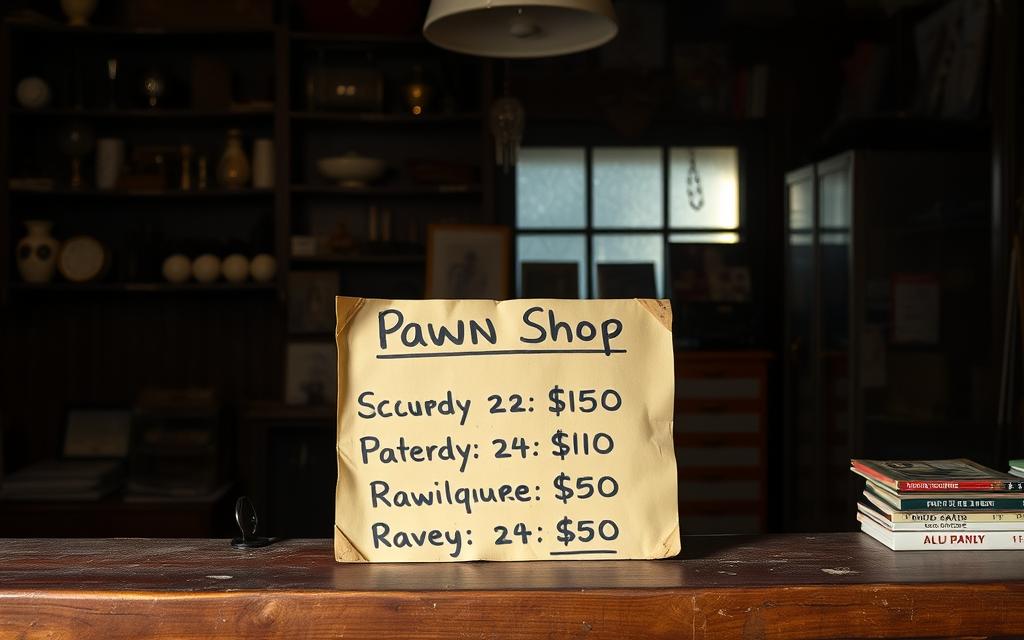
Typical Loan Amounts and Interest Rates
Most locations offer 25–40% of the device’s resale value as loan amounts. For example, a $1,000 MacBook might secure $250–400. Interest rates typically range 15–25% monthly, with fees varying by state.
Common fee structures include:
- Storage fees: $5–20/month for collateral
- Insurance: 1–3% of loan value
- APR scenarios: 90-day loans cost 45–75% in total interest
| Loan Term | Interest Cost | Effective APR |
|---|---|---|
| 30 days | 15–25% | 180–300% |
| 60 days | 30–50% | 180–300% |
| 90 days | 45–75% | 180–300% |
Negotiation Strategies for Better Offers
Effective negotiation starts with research. Use eBay sold listings as value anchors—appraisers often match these prices. Additional tactics:
- Multi-shop comparisons: Leverage competing offers to drive bids up
- Timing: Visit at month-end when quotas reset
- Walk-away power: Be prepared to decline lowball offers
“Pawnbrokers typically aim for 50–70% profit margins on resale—use this to negotiate higher initial offers.”
For collateral deals, emphasize device condition and accessories. Complete sets can increase offers by 20–30%. Always clarify repayment terms to avoid surprises.
Alternatives to Pawning Your Computer
Exploring other options can help maximize your device‘s value. Specialized buyers and trade-in programs often offer better terms than traditional routes. Understanding these alternatives ensures you make an informed choice.
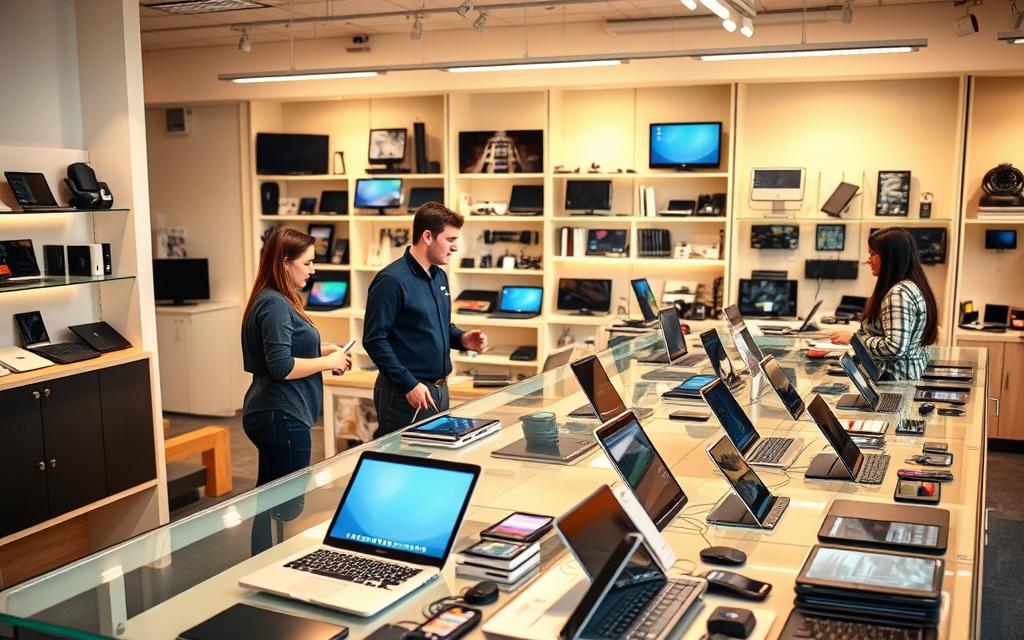
Selling to Specialized Electronics Buyers
Tech liquidators provide component-level valuation, assessing parts like GPUs and SSDs separately. This method often yields higher payouts than bulk offers. For example, a gaming laptop’s high-end GPU might fetch $150 alone.
Key advantages of specialized buyers:
- Faster transactions: Many offer same-day payments.
- Professional services: Includes data wiping and condition reports.
- Local networks: Avoid shipping costs and delays.
“ExIT Technologies reports that complete systems with original accessories sell 40% faster than incomplete setups.”
Trade-In Programs and Repair Options
Manufacturer trade-in programs (Apple, Dell) provide store credit or cash for upgrades. These programs often include free shipping labels and warranty transfers. However, offers may be lower than third-party buyers.
Repair options can revive damaged devices:
| Repair Type | Cost Range | Value Increase |
|---|---|---|
| Screen replacement | $50–$200 | +60–80% |
| Battery swap | $30–$100 | +30–50% |
| OS reinstall | $20–$50 | +15–25% |
For more tips on maximizing returns, explore where to sell your PC for. Certified shops like Gizmo Pros even offer 90-day warranties on repaired devices.
Conclusion: Making the Best Decision for Your Needs
Choosing the right option for your electronics requires balancing urgency and value. While quick cash solutions exist, comparing multiple offers ensures fair deals. Professional appraisals help determine accurate market prices.
Consider long-term financial impacts before committing. Some transactions have hidden fees or strict terms. Always verify buyer reputations through reviews and ratings.
For damaged devices, repairs often increase offers more than their cost. Complete accessories and original packaging boost payouts significantly. Explore trade-in programs for competitive alternatives.
Trusted locations provide transparent evaluations and fair terms. Research helps avoid common pitfalls while maximizing returns. The right decision depends on your specific needs and timeline.
FAQ
Will pawn shops accept any computer?
Most shops evaluate devices based on brand, condition, and demand. High-end models like Dell, HP, or Apple MacBooks have better resale potential. Older or heavily damaged units may be rejected.
How much can I get for my laptop at a pawn shop?
Offers typically range from 25% to 60% of retail value. Factors like specs, age, and accessories (chargers, original boxes) impact the final price. Recent models in excellent condition fetch higher amounts.
Do I need to wipe my data before pawning?
Yes. Always back up and factory reset your device. Shops won’t handle data removal for you, and leaving personal information risks privacy breaches. Use tools like DBAN for thorough erasure.
What if my computer has minor damage?
Scratches or worn keyboards may lower the offer, but functional issues (broken screens, battery failures) often disqualify it. Some shops may suggest repair services before accepting it.
Are gaming PCs or MacBooks more valuable?
Both hold value well. Gaming rigs with high-end GPUs (NVIDIA RTX, AMD Radeon) appeal to enthusiasts. MacBooks retain value longer due to Apple’s strong resale market.
Can I negotiate the loan amount?
Yes. Bring proof of current market prices (eBay sold listings, Amazon refurbished prices) to justify your ask. Shops often leave room for discussion, especially if your device is in demand.
How fast is the pawning process for electronics?
Appraisals usually take 10–30 minutes. If approved, you’ll receive cash or a loan agreement immediately. Have your ID ready—most states require it for transactions.
What alternatives exist besides pawn shops?
Consider trade-in programs (Best Buy, Amazon), local electronics buyers, or Facebook Marketplace. These options may offer better rates but lack the instant cash benefit of pawning.


